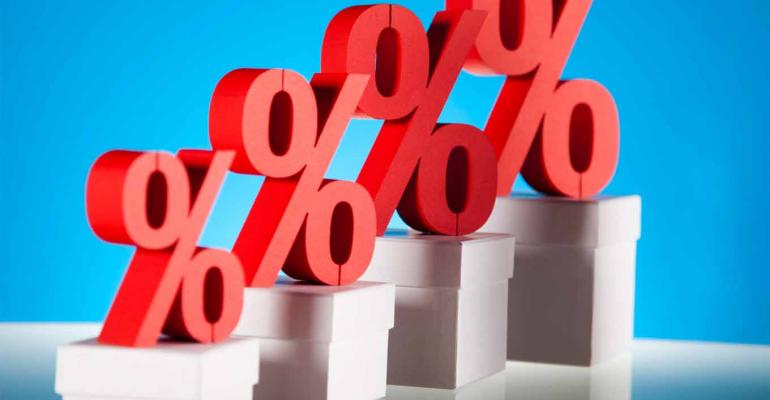Investor interest in the seniors housing and care sector is strong. Transaction volumes in the second quarter of 2015 reached near-record highs, with more than $23.4 billion of deals closing on a rolling four-quarter basis—the strongest pace of activity since 2011. Moreover, over the past four quarters, 554 deals closed, a near-record pace. Strong acquisition demand for seniors housing and care properties is leading to bidding wars, with prices being bid ever higher. In the second quarter, per unit pricing averaged $173,000 for seniors housing and $73,000 for skilled nursing facilities on a four-quarter moving average basis. Prices for seniors housing have never been so high.
A host of factors are drawing investors into the sector. These include:
- Enticing demographics;
- Compelling investment returns;
- Greater transaction volumes and liquidity of the sector;
- Rising transparency and understanding of the sector;
- Emerging post-acute care coordination opportunities;
- Governmental and social policy changes towards health care and its costs;
- Mounting understanding of the positive social and psychological benefits for residents.
But don’t forget the money
In addition to these factors are today’s capital market conditions, where capital is (1) relatively inexpensive and (2) readily available. Indeed, today’s low interest-rate environment has led to a proliferation of lenders and a very competitive lending environment. Both large and small commercial banks, the agencies, HUD, life companies, and a number of other non-bank lenders, including CMBS lenders, are active in the market. This has greased the wheels, so to speak, for deal activity.
Looking ahead, the question becomes what will happen if and when the capital markets change, a likely outcome in the coming months. Indeed, recent comments from Fed Chair Janet Yellen, as well as the minutes of the mid-June FOMC meeting, suggest that the Federal Reserve is moving closer to raising short-term interest rates later this year, perhaps as soon as September. The shift in policy would likely push the fed funds rate up in 25-basis point increments once or twice before year-end 2015. If this occurs, it would be the first time since 2008 (seven years!) that the Fed’s benchmark interest rate has not been zero, a significant sea change for both lenders and borrowers.
And what about higher rates?
For seniors housing, higher interest rates will change the economics of a transaction and will cause some investors and lenders to reconsider deals and opportunities. Expansion and renovation projects may be less feasible in a higher interest rate environment, while recapitalization opportunities may be less viable as well. Higher interest rates will also increase the cost of developing new seniors housing properties. All else equal, a 100-basis point increase from 5.5 percent to 6.5 percent on a 10-year fixed rate $10 million loan means a $5,000 monthly payment increase or $600,000 over the life of the mortgage—a 19 percent increase in costs for a 100-basis point change in rates. As rates rise, the economics of development will be affected and go-forward decisions on development activity may be paused or aborted. This will have many repercussions for businesses directly involved in development, as well as for those with indirect ties to development activity.
For existing property operators, a pause in development may be perceived as a good thing if they are located in a metropolitan market that has high levels of new development, such as San Antonio, for example. For potential residents, a slowdown in development may be less positive if it means that fewer housing options are available to them.
Importantly, however, higher interest rates also indicate that the Federal Reserve believes the economy has enough heft, strength and stamina to absorb the effects of a higher cost of capital. A stronger economy in turn will sustain the demand side of the seniors housing equation and help lead-generation, conversion rates and, ultimately, move-in rates, absorption levels and rent growth.
What happens to values?
Cap rates and values may also be affected by a higher interest rate environment. Conventional wisdom would say that an increase in interest rates will lead to an increase in cap rates. If this occurs and if cap rates go up in lock step with interest rates and if property level NOI does not adjust, property valuations have to decline for the integrity of cap rate = NOI/value to remain in place. That said, values could remain stable if (1) NOI grows either through increased revenues or reduced expenses (note that the latter may be challenging in light of upward pressures on wages). And values could remain stable if (2) cap rates do not rise in lock step with interest rates, thereby allowing the risk premium, or the gap between the risk-free 10-year Treasury yield and the cap rates for seniors housing, to narrow; today, the risk premium averages 550 basis points. The risk premium could narrow if the perceived risk of investing in seniors housing declines. And this outcome is entirely possible since institutional investor interest in the sector is quite strong, keeping downward pressure on cap rates.
Don’t panic
Putting these outcomes aside for a moment, it is important to emphasize that the magnitude of interest rate increases currently being discussed by analysts, pundits and officials are not huge and any adjustment in rates move them off of historic lows. The expectation and hope is that the increases will be orchestrated in a smooth and systematic way and that the markets will not overreact. That said, it has historically been challenging, however, to orchestrate such a smooth outcome.

